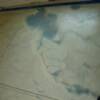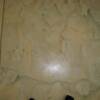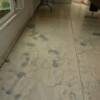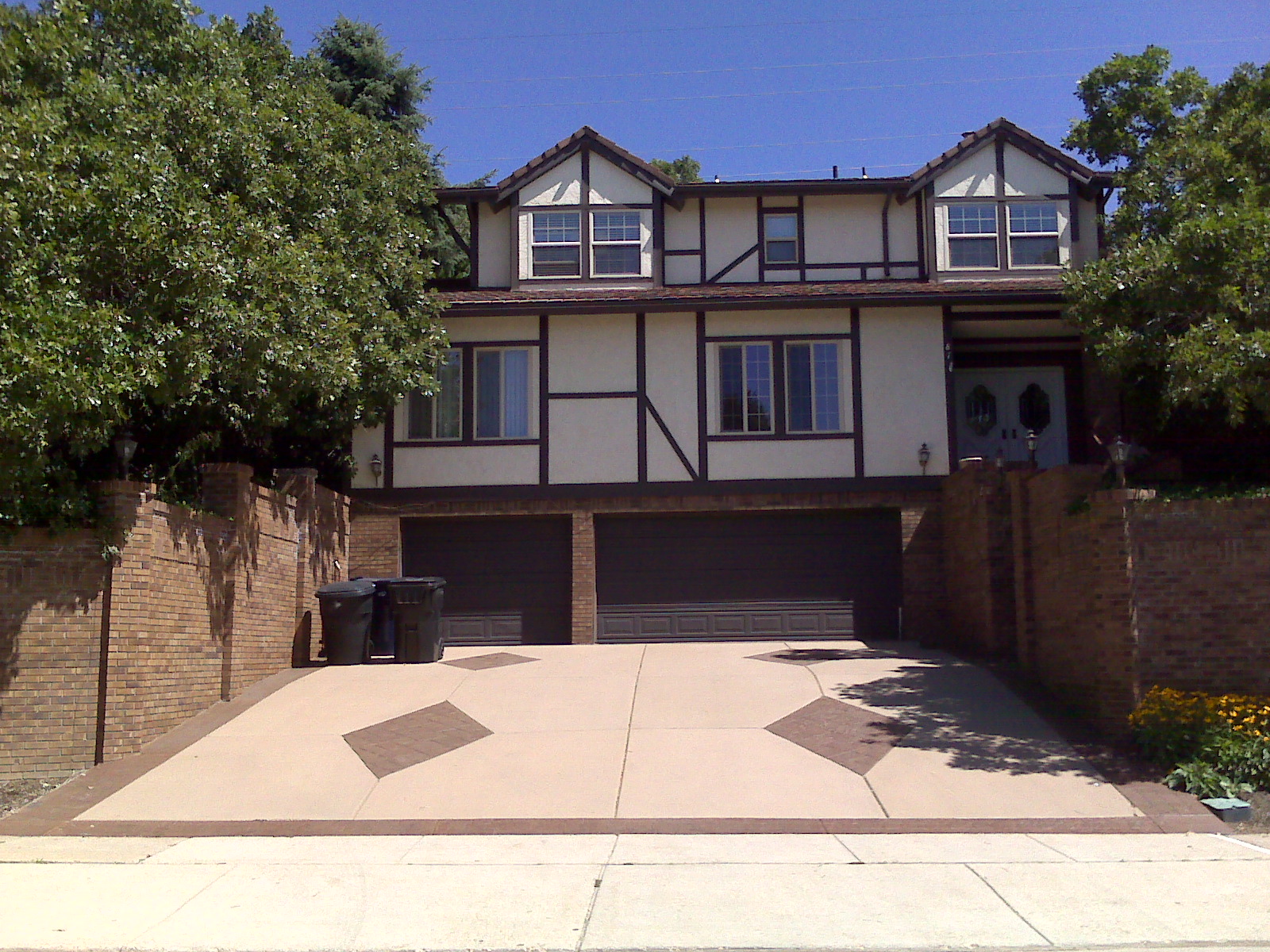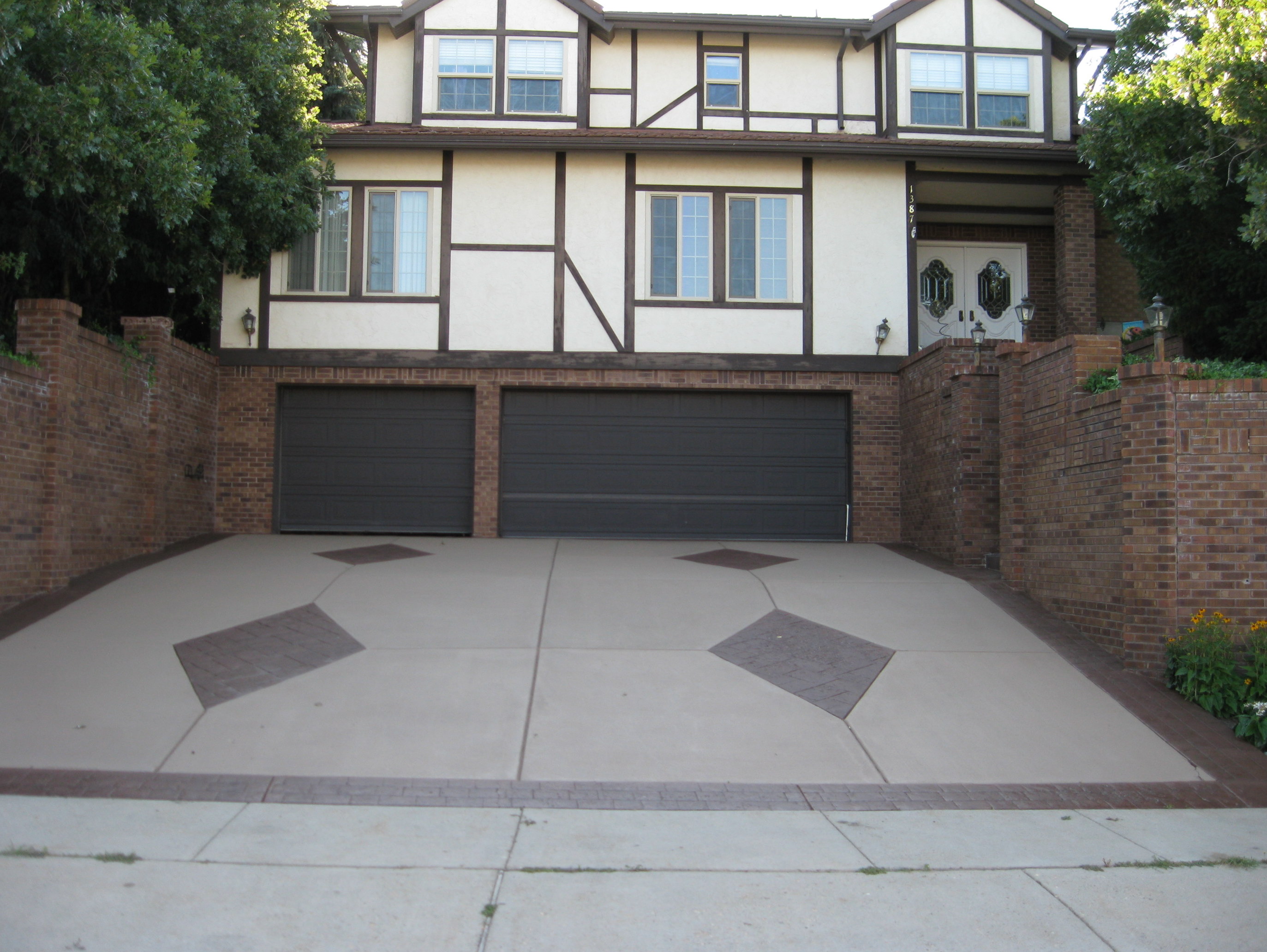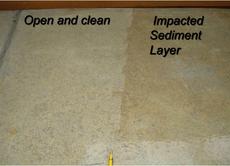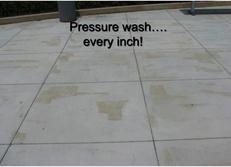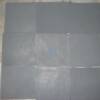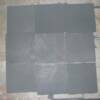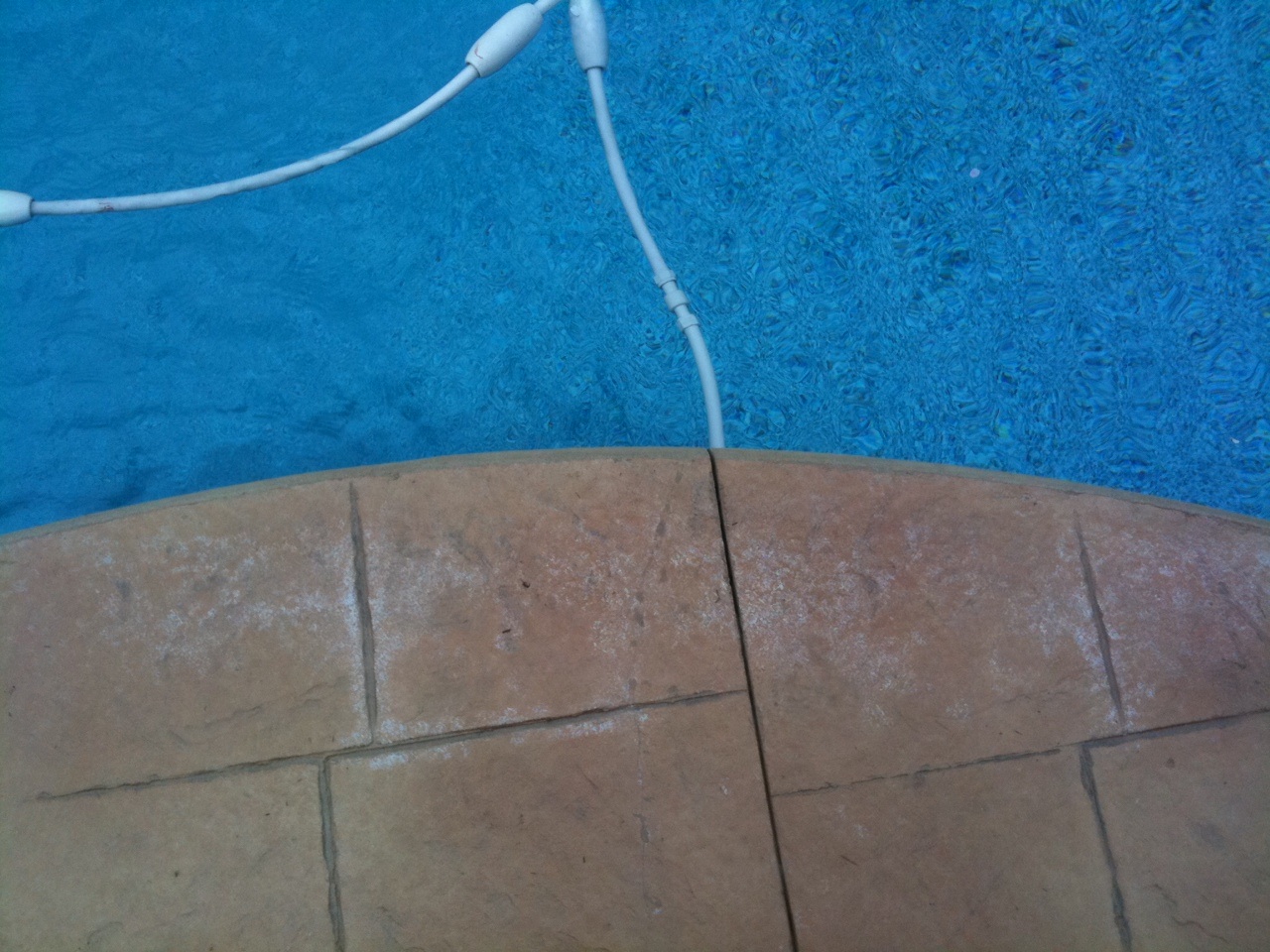BLOTCHY SOLID COLOR STAIN FINISH
PROPER PRESSURE WASHING
Why is proper pressure washing so important? Talk to any cement coating chemist and they will tell you that the cleanliness of the substrate (concrete surface) is paramount when applying water-based stains. This is the case for NewLook products. NewLook recommends a 3000 psi pressure washer with 4 gallons per minute as a minimum. Pressure washing is the minimum preparation requirement. Additional methods may be necessary. NewLook Concrete Color Stains need to soak into the pores of the concrete, which typically cannot be seen with the naked eye--so do not rely on what you see on the surface. A 2000 psi pressure washer may show visible signs of dirt being removed from the concrete, but there may still be dirt and grime deeper in the pores.
SPALLING
Spalling is the arch nemesis of any beautiful concrete driveway. It occurs when water absorbs into the concrete substrate, freezes and then expands due to temperature volatility. This expansion from the water freezing pushes the top layer of concrete up and pops it off. As a result you will see bits and pieces of your concrete missing. This picture of NewLook Solid Color Stain was installed over spalling concrete (left). The property owners never noticed the spalling before but you can see in the photo that there are pits in the concrete where NewLook stains covered the existing spalling marks. NewLook Solid Color Stain will cover the spalling concrete, but it must be understood that NewLook stains will not prevent spalling from happening. As you see in this image, the original gray concrete shows through from underneath the stain. The property owner may need to plan on reapplying NewLook more often due to the concrete continually popping off.
COLOR & LIGHTING (EFFECTS)
Color and lighting are important concepts that need to be understood when addressing color-related questions and concerns. When comparing a concrete color to its respective color chip, lighting is a significant variable that must be considered. When a color chip is on the concrete you will want to look at it from approximately 5 feet above and from different angles or directions. This will help you and the customer see the concrete’s true color; do not simply take a glance from one direction and assume that the color you see is the "true" color. NewLook Concrete Color Stains will be the same color when applied over patching materials. But the differing textures will make the surface appear to be a different shade.
Think of a room full of tan carpet. Every fiber is the same shade of tan. If you were to vacuum the carpet, you would see differences in color due to how the carpet laid down. Even though the carpet is uniform in color the way the light is reflecting off of the carpet alters the appearance. This idea can be applied to colored concrete. Except there are no fibers, rather it's the porosity that affects the color's appearance.
Consider the driveway pictures shown here. This driveway is stained with Cowboy Dust 225 Solid Color Stain and Buffalo Brown Translucent Color Enhancer on the stamped portions. One picture is in the morning and the other is in the afternoon. The picture in the morning was taken before the sun rose above the nearby mountains while the other was taken during the noon day sunlight. The picture in morning makes the driveway look like it was stained with Beach House. Broomed concrete for example casts tiny shadows across the entire concrete surface which will alter the color especially in the early morning and late afternoon when the sun is low.
Stain colors are selected from the color chips in our color chart or fan deck. But the final stain color will always depend on the concrete texture. If your concrete texture is the exact same as the color chip texture (perfectly smooth and without blemishes or pores) then you can expect to get the same color. But concrete texture is rarely the same--it is porous and varies in texture. Even though the stain color will be the same as the chip color you selected, it may appear different when on your concrete.
So how do you gauge how much the stain color will vary from the color chip? Again, it depends on the texture. For example, these nine concrete sample pieces (right group of images) were stained with the same Steel (205) Solid Color Stain. The actual color chip used to select the color is centered on the middle piece. Only one stain kit was used to color all pieces. Each piece has a unique texture. Some are smooth (bottom-middle). Some are very porous (top). As you can see the more porous pieces appear darker and have a more bluish tint than their smoother counterparts, which appear lighter. Part of the reason these other pieces appear lighter is because light reflects off their surface at a different angle, which also makes a difference in final color appearance. Keep this important concept in mind when selecting color.
Note: The Concrete Color Stains, particularly the Solid Color Stain and Translucent Color Enhancer, can appear "lighter" than their respective color chip as they are being installed on the concrete. But as the stains cure and dry on the surface, they "darken" slightly to align more closely with their intended color. We recommend giving the stains sufficient time to cure before evaluating the color match.
Troubleshooting & Instruction Links
In a perfect world, installers will never have problems using decorative concrete products. But alas! Once in a while there are issues that raise questions about the installation procedure or even the product itself. It has been our experience that the NewLook Solid Color Stain will indeed have "issues" when not installed correctly. Blotchiness, for example, is easily recognized by the discolorations after the stain dries. "What gives?" you might ask. Click on the Sand 220 Solid Color Stain (right).
Cause: Installer did not re-broom as the stain dried. Powder pigments within the NewLook Solid Color Stain are heavy and tend to sink. Such is the case when the product material is left in the bucket too long without agitation, as well as on the concrete as the stain is drying. These micronized powder pigments will fall to the bottom of the solution if left alone, leaving more of the liquid pigments to remain on top. As you see in this picture (an extreme example) the contractors most likely spread out the stain and then went to lunch with out re-brushing.
For next time: Re-brush until there is no difference in color. To play it safe, re-brush until the stain is nearly dry. Indoor applications will require more brushing because of the lack of sun or air flow. Keep a window open and turn on a fan to keep air circulating; in cooler weather, having hot air blow will help, too.
Solution: Apply another coat of Solid Color Stain. In most situations, one coat will suffice. Using the included images as example, you would probably need two coats because there is so much contrast with the black coloring.
Process of Pressure Washing:
Methodical: –adjective
1. performed, disposed, or acting in a systematic way; systematic; orderly
2. painstaking, esp. slow and careful; deliberate.
Be methodical while pressure washing, although the process does not need to be painstaking. The picture (right bottom) is reveals evidence of someone who was rushing through the job and not washing every inch.
Many people will swing the wand of their pressure washer and think they are being consistent. Swinging your wand means that you are washing the surface in an inconsistent manner. The distance between wand and the concrete is different at the ends of the swinging motion than it is in the middle. We recommend at side stepping-motion with your feet while maintaining a constant distance from wand to concrete. You may look like a waddling penguin but at least your concrete will be clean!
Pressure Washing Tips:
- The end of the wand should not be closer than 6 inches to the concrete. In some cases with stronger machines, 12 inches is sufficient.
- Allow the wand lines to overlap, while this may sound counterintuitive, it ensures that no slivers of concrete are left unclean (right bottom).
- Clean a section at a time. Cleaning an area that is too big becomes more difficult to manage and keep track of where you have been.
- When washing edges next to landscaping, chose to do these first as they will kick up dirt. Waiting to do the edges last will spread dirt over your newly clean areas and will create more work for you.
Proper pressure washing is vital. Failure to pressure wash properly can prevent NewLook Concrete Color Stains from bonding properly and they may come off with wear when preparation was not performed correctly. Being methodical in your pressure washing saves you time and money since you don't have to come back and do it all over again. So do it right; be thorough so you only have to do it once.
Click Images
Click Images
SWIMING POOLS AND SALT WATER DEPOSITS
Issue: White deposits or coating delamination near (salt water) swimming pools.
Explanation: NewLook stains have been used successfully on swiming pool decks for over 20 years. However, salt water pools have become more trendy; customers are more familiar with the benefit of reducing the effort in keeping the pool chlorinated and less familiar with the potential chloride-ion damange from the water. Generally, salt water pools do not damage the pool deck as long as the chemical system is balanced. But if a chemical imbalance exists (e.g. too much or too little of certain chemicals) then the risk for delamination or white deposits increase dramatically. As water evaporates from the surface it leaves behind the solids content, which typically manifests itself in the form of white powder. NewLook stains will not prevent this discoloration from occuring, nor with they prevent the build-up of deposits.
Solution: Try power washing the residue from the surface. If this does not work, the stains (and any existing chemical degredation) may need to be removed.
© 2011 NewLook International, Inc. All Rights Reserved
Follow Us:

